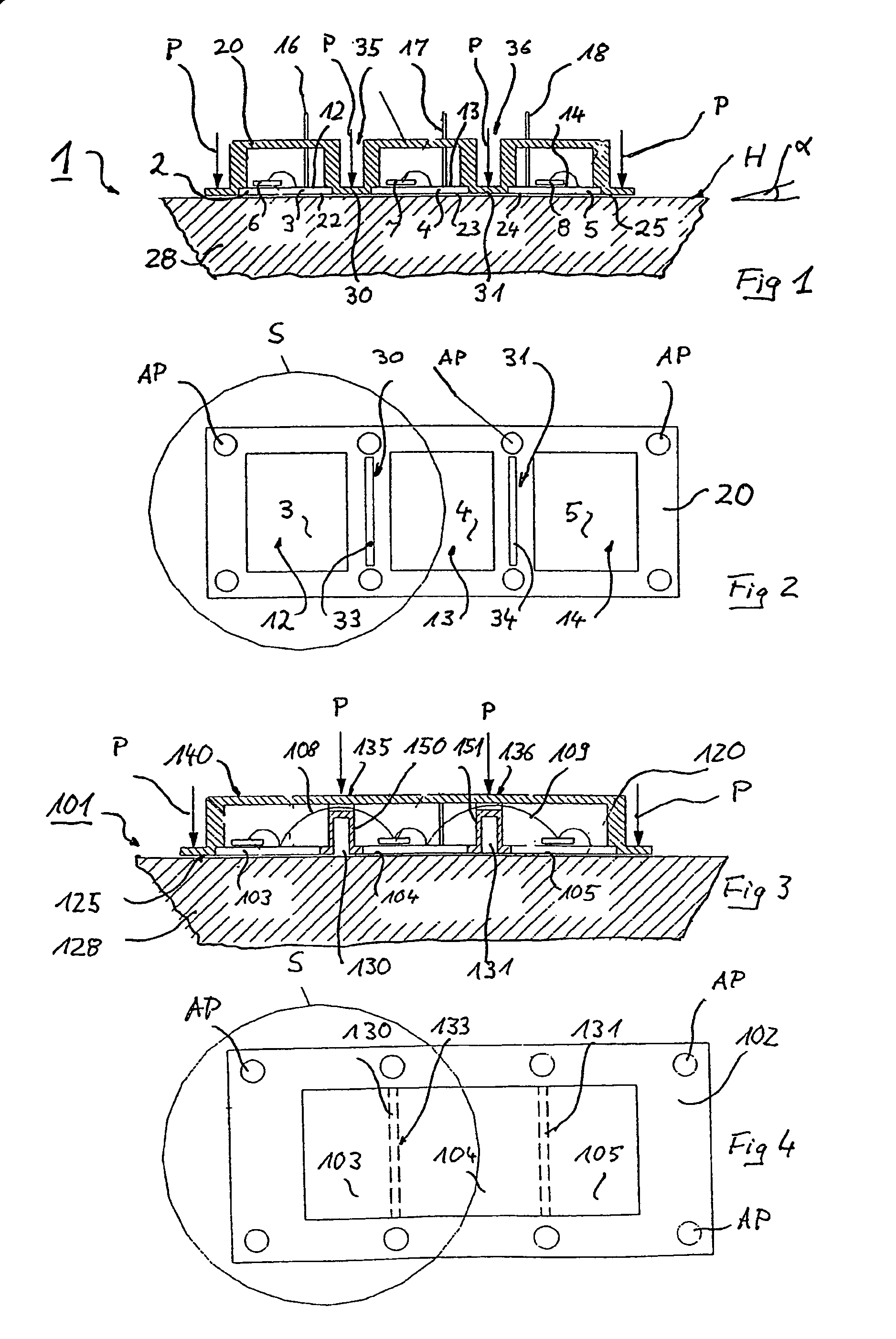Power semiconductor module comprising elastic housing for accommodating movement of individual substrate regions on a heat sink
a technology of semiconductor modules and heat sinks, which is applied in the direction of semiconductor devices, semiconductor/solid-state device details, electrical apparatus, etc., can solve the problems of low bending stiffness, mechanical stresses in the module, undesirable deformation or flexure at the underside of the substrate or the module, etc., to achieve the effect of reducing the number of rejects in respect of finished modules, increasing yield and improving mechanical deformation
- Summary
- Abstract
- Description
- Claims
- Application Information
AI Technical Summary
Benefits of technology
Problems solved by technology
Method used
Image
Examples
Embodiment Construction
[0032]The power semiconductor module 1 shown in FIG. 1 comprises a ceramic substrate (carrier element) 2, which is segmented into a plurality of substrate regions (partial substrates) 3, 4 and 5 and has as it were three segments S (FIG. 2). Arranged on the substrate regions 3, 4 and 5 are semiconductor components 6, 7 and 8, which are all constituent parts of the overall module 1. The semiconductor components are contact-connected via indicated bonding wires to conductor tracks (not specifically illustrated) which are formed on the respective surface 12, 13, 14 of the partial substrates. The conductor tracks of different partial substrates may be electrically connected to one another via bonding wires. The conductor tracks lead to contact pins (connection pins, 16, 17, 18 for the external connection of the power semiconductor module. The semiconductor components 6, 7 and 8 may be power semiconductors which develop high power losses converted into heat and therefore require an effect...
PUM
 Login to View More
Login to View More Abstract
Description
Claims
Application Information
 Login to View More
Login to View More - R&D
- Intellectual Property
- Life Sciences
- Materials
- Tech Scout
- Unparalleled Data Quality
- Higher Quality Content
- 60% Fewer Hallucinations
Browse by: Latest US Patents, China's latest patents, Technical Efficacy Thesaurus, Application Domain, Technology Topic, Popular Technical Reports.
© 2025 PatSnap. All rights reserved.Legal|Privacy policy|Modern Slavery Act Transparency Statement|Sitemap|About US| Contact US: help@patsnap.com


